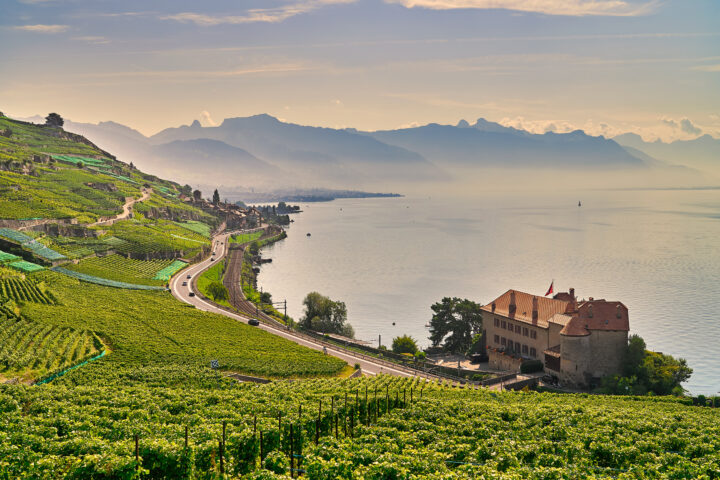
Using Crispr to combat climate change
In the Tages-Anzeiger newspaper, Nobel Prize winner Jennifer Doudna talks about the opportunities and risks of gene scissors. The tool can be used to specifically treat hereditary diseases, breed drought-tolerant plants and reduce greenhouse gas emis-sions from cows.
Monday, December 11, 2023
The Crispr/Cas9 gene scissors were invented in 2012. Eight years later, the two researchers Jennifer Doudna and Emmanuelle Charpentier were awarded the Nobel Prize for their work. Where does research stand today? In an interview with the Tages-Anzeiger newspaper, Doudna says: "Crispr is being used in laboratories all over the world, not only in the fields of health, agriculture, climate change and synthetic biology, but also in diagnostics to detect coronaviruses and other diseases."
Great progress is being made in medicine. Recently, the first gene therapy using Crispr was approved in both the UK and the USA. SRF reported on this. Genome editing can be used to combat sickle cell anaemia, explains Jennifer Doudna. The hereditary disease is insidious. It is one of the most common hereditary diseases in the USA. Around 100,000 people in the USA suffer from the disease. It mainly affects black people.
Patients develop a defective form of haemoglobin - the red blood cells become sickle-shaped and block the organs. The disease is very painful for those affected. Today, treatment requires frequent blood transfusions and usually leads to early death. With the gene scissors, a way has been found to help patients. The gene scissors are used in vivo: Cells in living humans are genetically modified "in real time". After the procedure, the red blood cells are able to produce healthy haemoglobin again.
As Jennifer Doudna says in an interview, the results are promising. This optimism is evidently shared by the regulatory authorities in the UK and the USA. The biotech company "Crispr Therapeutics", based in Switzerland, is behind the new therapy. Research is being conducted in the USA. The researcher rejects interventions in the human germline. In the treatment of safe cell anaemia, the change only affects the genes of the (so-called somatic) cells of the respective patient, i.e. the blood cells and not egg and sperm cells. They are therefore not passed on to the next generation.
As swiss-food has shown in an earlier article, genome editing also offers enormous opportunities in agriculture. In an article, we presented possible Crispr applications for Swiss agriculture. For example, pesticides can be saved. At present, gene scissors are not permitted for breeding resistant varieties. It falls under the genetic engineering moratorium. However, various products bred with the gene scissors are already on the market worldwide. Doudna mentions various new cultivars with consumer and health benefits, such as tomatoes with an increased content of vitamin D or gamma-aminobutyric acid (an essential neutrotransmitter to which various health-promoting effects are attributed) and rice with additional beta-carotene. However, things have also started to move in Switzerland. Parliament has instructed the Federal Council to authorise the use of gene scissors in future. This would be an important step for plant breeding.
Jennifer Doudna says in an interview with the Tages-Anzeiger: "I am particularly enthusiastic about plants that help farmers adapt to climate change by being more drought-tolerant and absorbing more carbon from the atmosphere. Crispr can help us combat climate change." There are also projects to support and improve animal health. And Doudna explains that researchers at the Innovative Genomics Institute are investigating whether Crispr can be used to change the microbiome in the stomachs of cows so that they emit less methane.
Sources
Kindly note:
We, a non-native editorial team value clear and faultless communication. At times we have to prioritize speed over perfection, utilizing tools, that are still learning.
We are deepL sorry for any observed stylistic or spelling errors.
Related articles

Triazole in Lake Geneva: Authorities give the all-clear
In late summer 2025, the news caused a stir: the substance 1,2,4-triazole – a chemical compound used in a wide variety of applications – was found in drinking water from Lake Geneva. Now the cantons of Geneva, Vaud and Valais have given the all-clear: the water is safe to drink.

'There is also a life before death' – Wine Pope Philipp Schwander on the Zeitgeist and the Activism of Health Authorities
The Swiss Master of Wine criticizes in an interview that wine is increasingly being demonized – contrary to scientific evidence and without any discussion about dosage and risk.

Sushi from Swiss Rice – Possible for a Few Years Now
Where once lamb’s lettuce and potatoes grew, a crop more commonly associated with Asia is now thriving: rice. What might sound like an exotic experiment has in some parts of Switzerland developed into a promising niche with a future.

Ant infestation threatens Zurich communities
An invasive ant from the Mediterranean region is spreading rapidly in the canton of Zurich, threatening communities, construction projects, and agriculture. Insecticides could help—but their use remains severely restricted.

